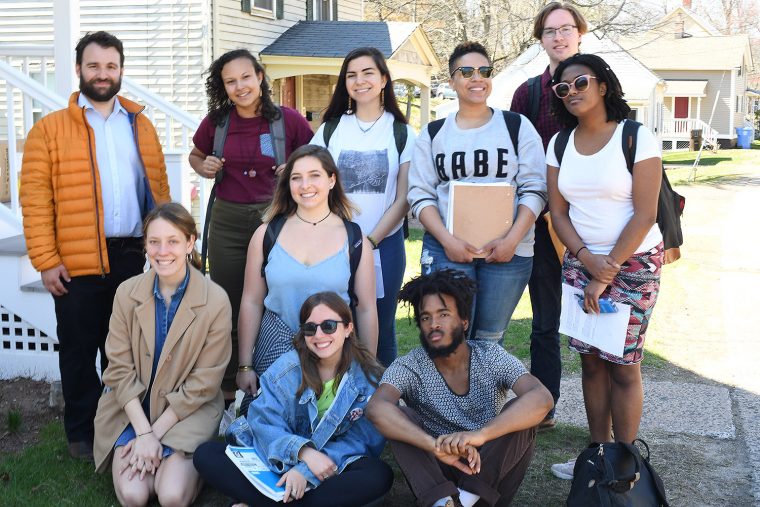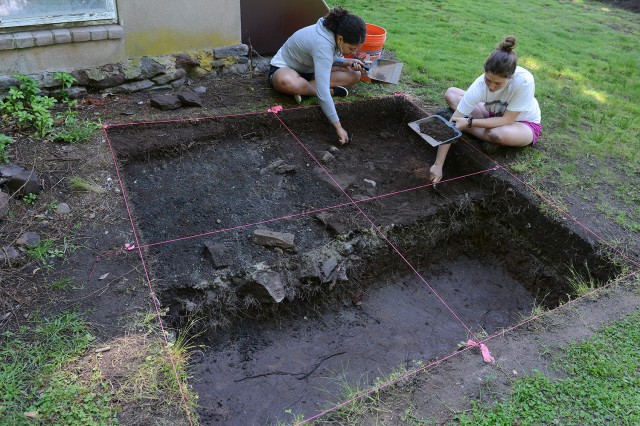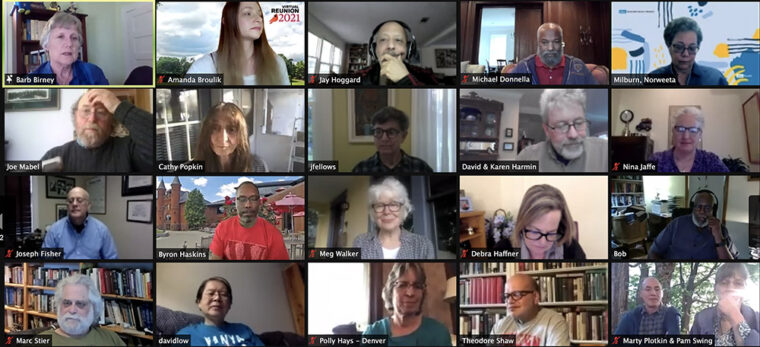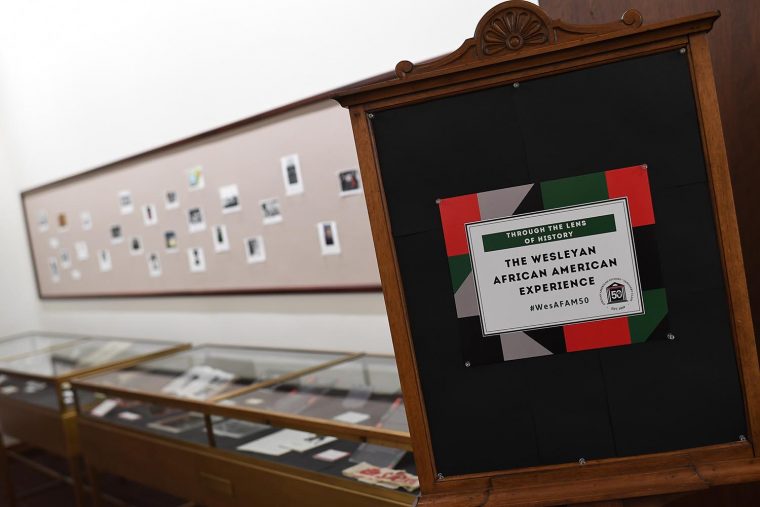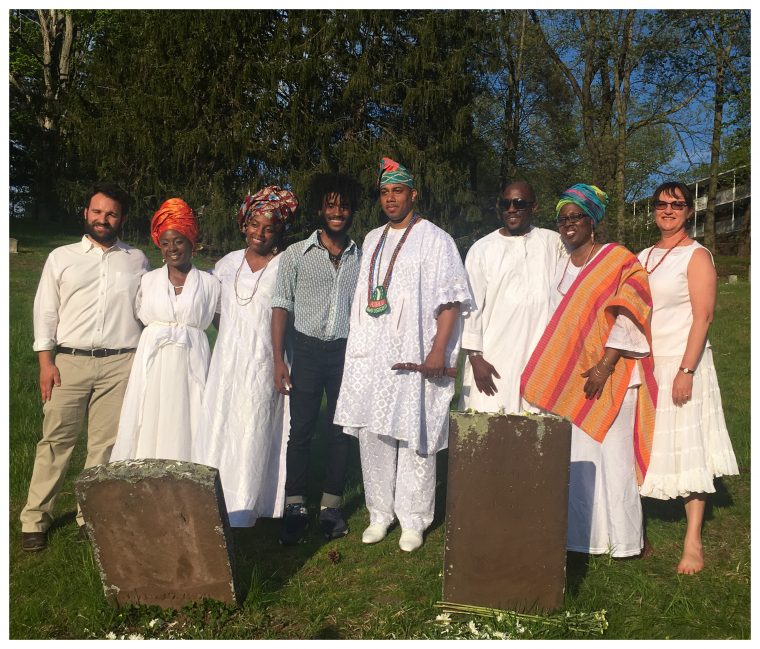“This is the history of right here,” said Visiting Assistant Professor of African American Studies Jesse Nasta ’07, speaking of his work with Black Middletown Lives, his service-learning class. “We venture deep, but no farther than two blocks.” He and his class of 13 students are doing firsthand archival research on individual projects, documenting the lives of those African Americans who lived in the area now called “The Beman Triangle,” after the most prominent black property owner in that five-acre patch of land bordered on one side by Knowles Avenue to the corner where Neon Deli now stands at…
Sarah Croucher is again leading an excavation at the historic African American community
In this video, Sarah Croucher, assistant professor of anthropology, assistant professor of archaeology, discusses her community archaeology project in the "Beman Triangle" in Middletown, Conn. The houses built on this land from the 1840s were home to a community of African Americans living in Middletown, tied to the nearby A.M.E. Zion Church. Artifacts discovered in the area from 19th century trash pits shed new light on the lives of the community members, and the longstanding relationship between the church, Middletown and Wesleyan. Read more about Croucher's project in this past Wesleyan Connection article. #THISISWHY [youtube width="640" height="420"]http://www.youtube.com/watch?v=ty_fiNkNdtg[/youtube]
In this issue of The Wesleyan Connection, we ask 5 Questions of Sarah Croucher, assistant professor of anthropology, assistant professor of archaeology, assistant professor of feminist, gender, and sexuality studies. Croucher will lead an archaeological dig on the site of the Beman Triangle in Middletown on April 28-29. The public is welcome to attend. To view photos of the dig on April 14-15 click here. Q: Professor Croucher, what exactly is the Beman Triangle and what is its significance to the history of Middletown? A: The Beman Triangle is the land between Vine Street, Cross Street, and Knowles Ave., where…
In an episode of WNPR’s “Where We Live,” Sarah Croucher, assistant professor anthropology, assistant professor archeology, discusses the upcoming dig at Beman Triangle, a site in Middletown, Conn. that was the center of the city’s African American community in the 19th and early 20th century.
Community archeology project examines local 19th Century African-American settlement
Archaeology students are exploring the historic Beman Triangle this summer
Assistant Professor Sarah Croucher led an excavation of the Beman Triangle over the weekend
All Wesleyan alumni and families were invited to participate in Virtual Reunion 2021: A Week of Wes! from May 10-15. The week's worth of events celebrated the classes of 1s and 6s. A sampling of the virtual reunion events are below: Other reunion events included an Alumni of Color (AOC)/Students of Color (SOC) Reception moderated by Kimberly King ’97, with remarks by Professor Theodore M. Shaw '76; "Pie Pops" with pastry chef Candace Nelson '96 and "Sugar Rush" winner Jennifer Low '06; a Cardinal Family Fun Hour; a book talk with Wesleyan Professor of History Ronald Schatz; a Christina Crosby…
Wesleyan in the News Inside Higher Ed: "Contagious Civic Engagement" In this essay, Wesleyan President Michael S. Roth ’78 calls for a "virtuous contagion" to stimulate voting and other forms of civic engagement among young people, and writes about how this can still be possible at a time of social distancing. "The best way to attack cynicism, apathy or voter suppression is through authentic civic engagement between elections," he writes. "One of the great things about this kind of engagement is that it is contagious. As we replicate efforts to bring people into the political process, we create habits of engagement…
(more…)
On May 9, a group of students, faculty, and Middletown friends joined Jumoke McDuffie-Thurmond ’19 and Chief Ayanda Clarke ’99 in a spiritual commemoration ceremony to honor a woman, Silva Storms, who died in 1820 and was buried in the cemetery on Vine Street, across from the Beman Triangle. Research indicates she had been born in Africa and was brought to Middletown as an enslaved person. The event was part of McDuffie-Thurmond's research project for Black Middletown Lives, the service-learning course taught by Jesse Nasta ’07, visiting assistant professor of African American studies. Nasta notes that McDuffie-Thurmond, who had been documenting…


